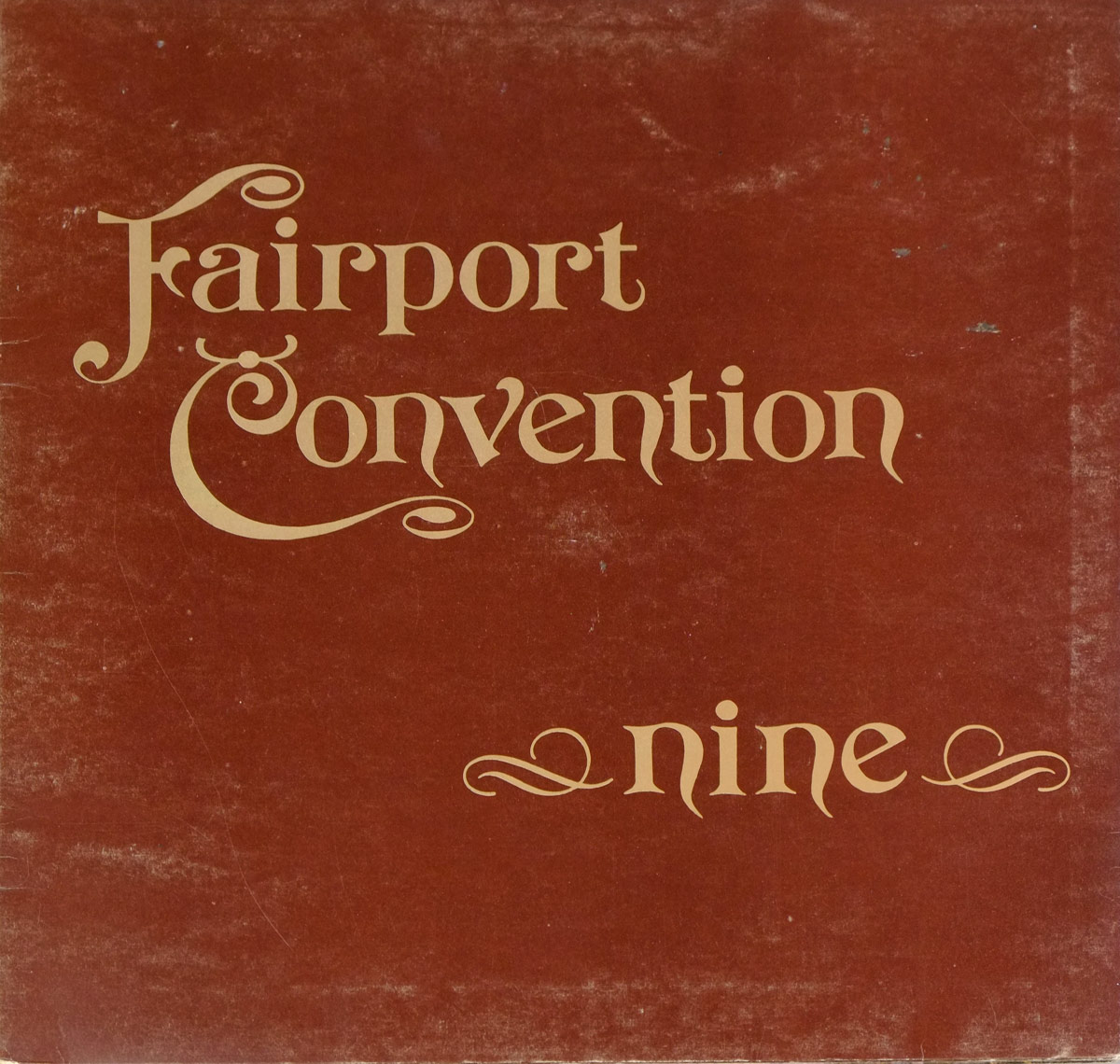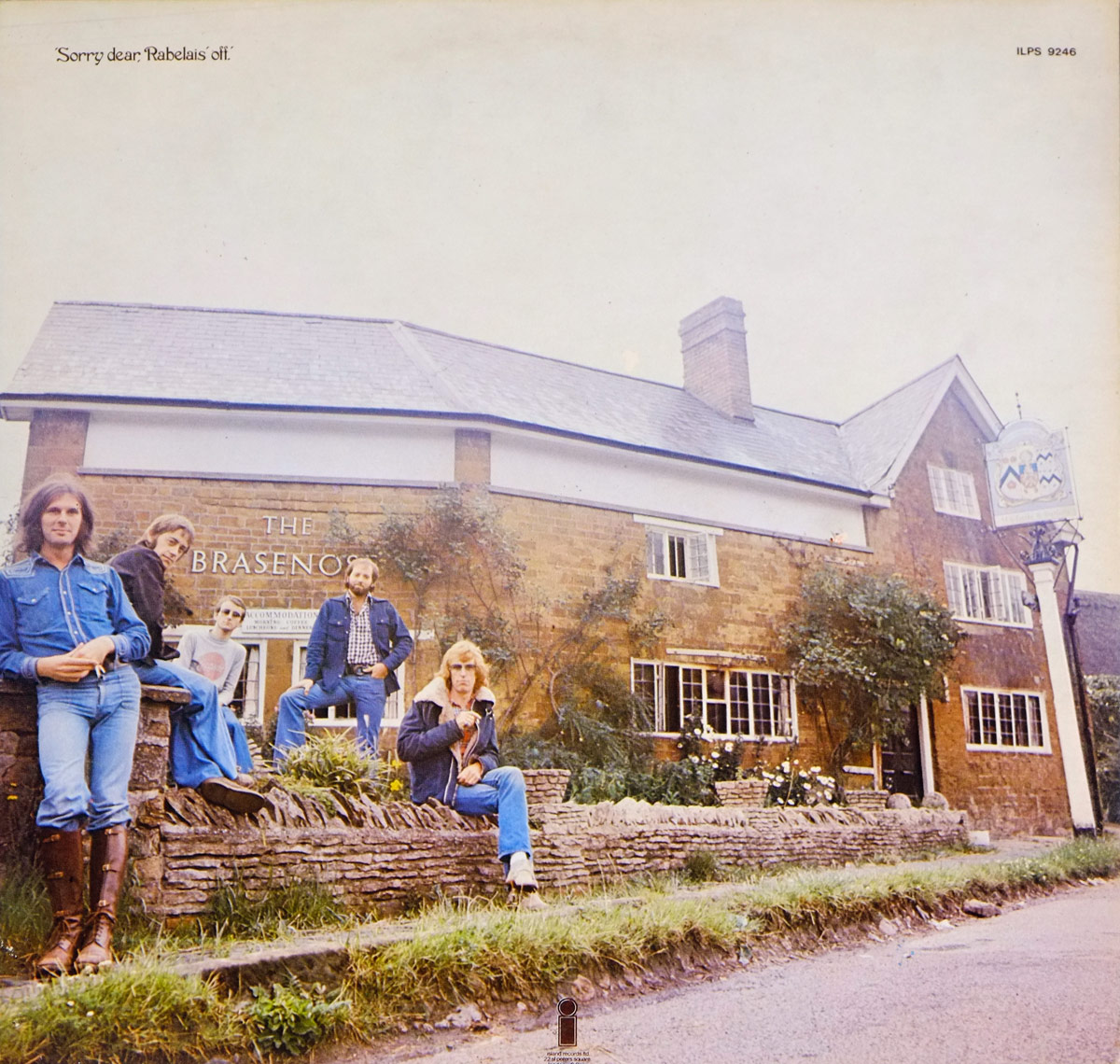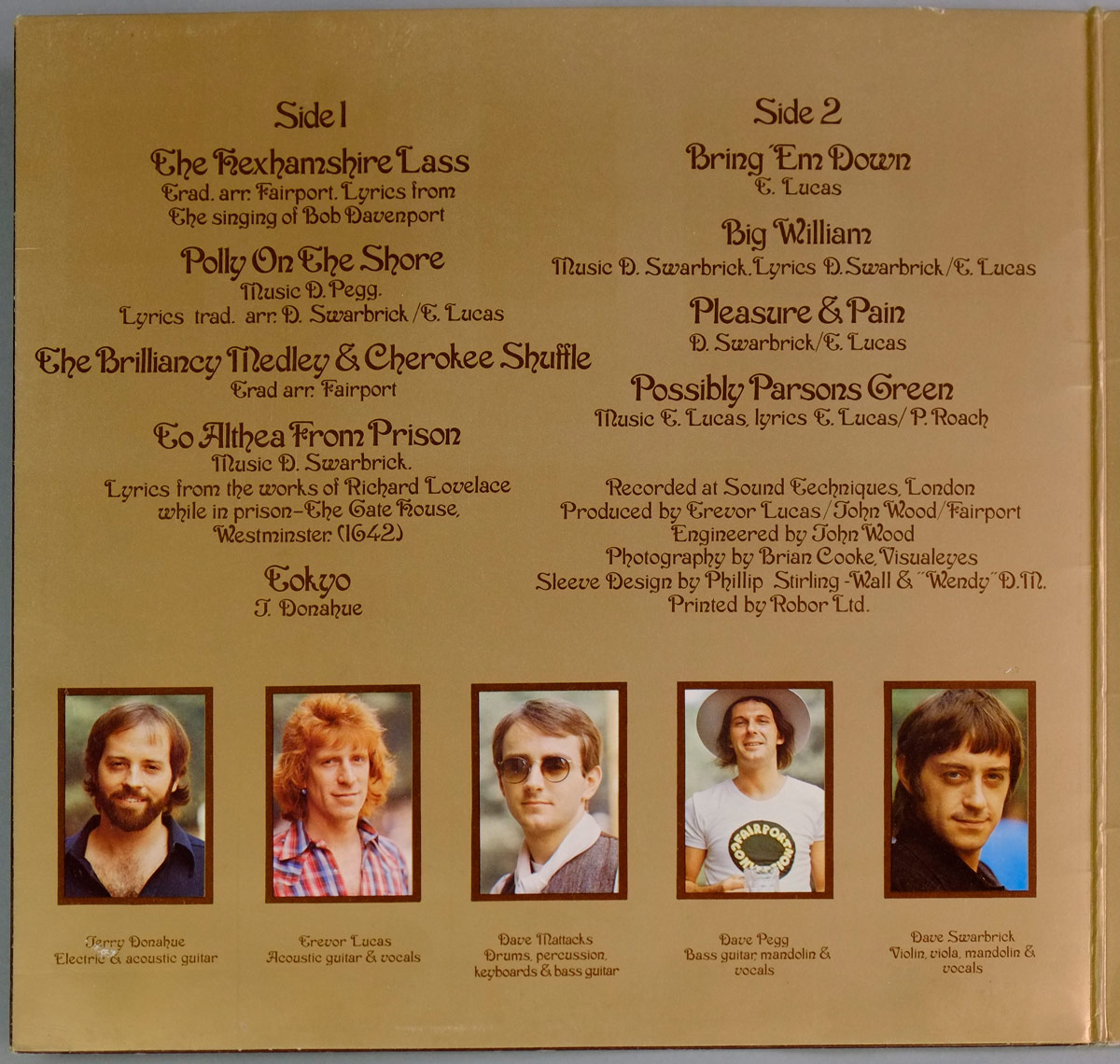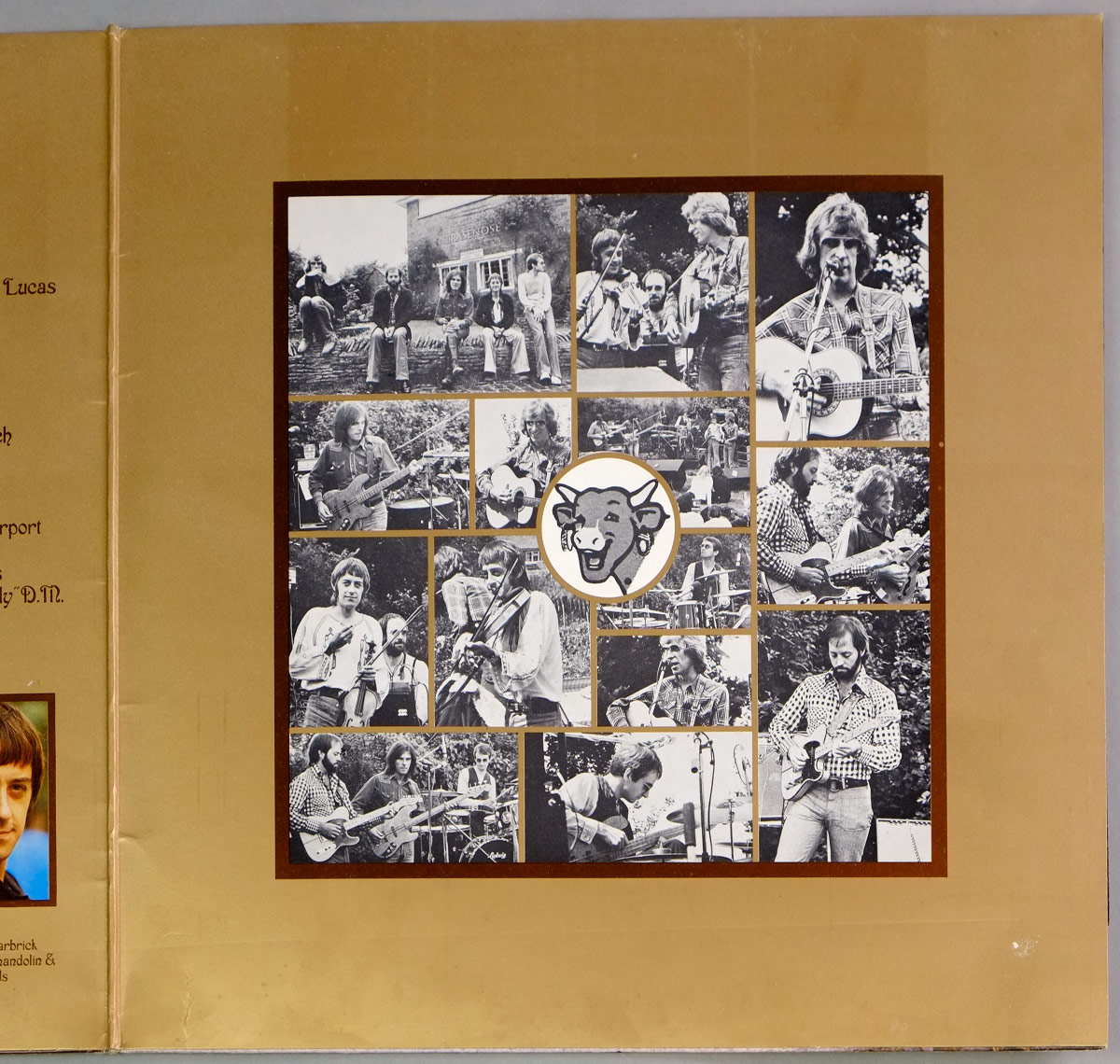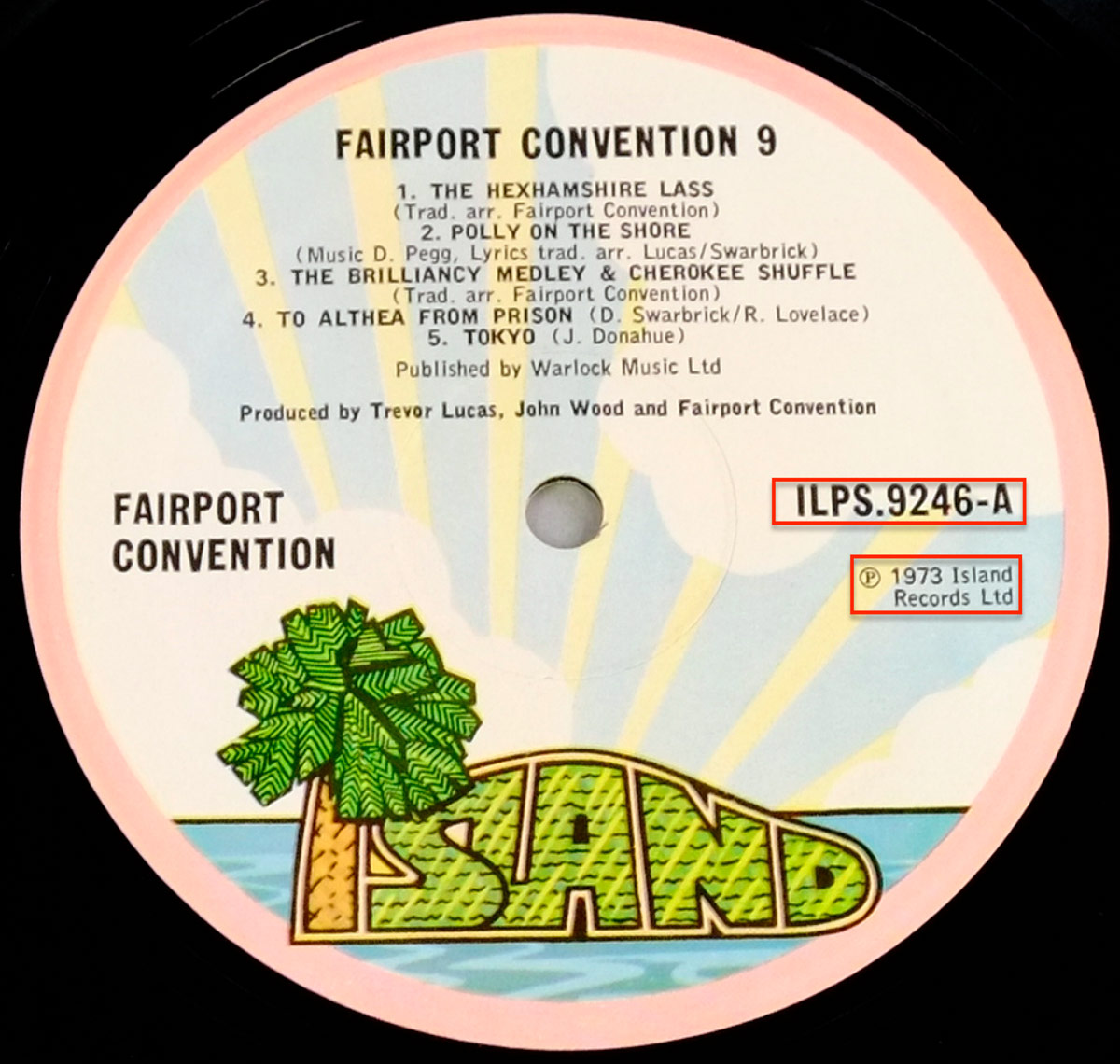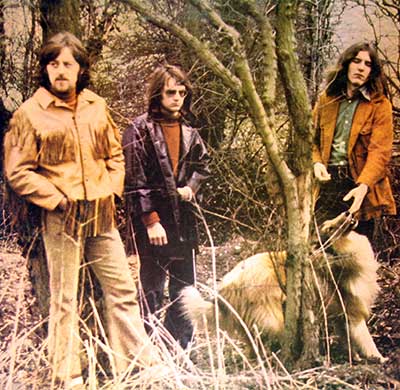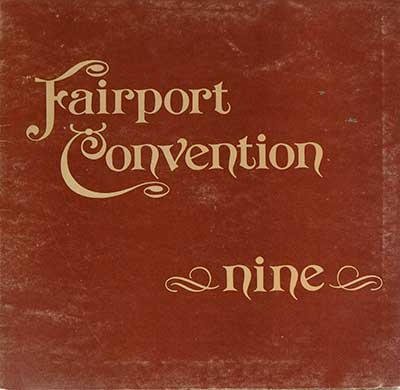FAIRPORT CONVENTION – ÒNineÓ (1973) Album Description:
The Turning Wheel of British Folk Rock
Released in 1973, "Nine" stands at a peculiar crossroads in Fairport Convention's storied history. Having already traversed the wild terrains of traditional English folk and rock fusion, the band now found itself grappling with transformation. Gone was the mystical voice of Sandy Denny. In her place: Trevor Lucas, the Australian with a weathered baritone, and Jerry Donahue, the Telecaster magician who could bend strings like a blacksmith twists iron. This was not the Fairport of "Liege & Lief". This was a group reshaping its identityÑrooted in the past, yes, but bending toward something less romantic and more resolute.
The BandÕs Evolving Lineup
The lineup that recorded "Nine" was a muscular configuration: Trevor Lucas brought gravitas on vocals and acoustic guitar. Dave Swarbrick was still onboard, supplying fiddle fireworks and vocal passion. Jerry Donahue's electric and acoustic guitar textures injected an Americana hue, while Dave Pegg on bass and mandolin provided rhythmic dexterity and harmony vocals. Dave Mattacks, now fully embedded in FairportÕs pulse, handled drums, keyboards, and even some bassÑa quiet polymath in the engine room.
Folk Rock in the Early Seventies
By 1973, British folk rock had seen its golden moment pass. The genreÕs key innovatorsÑFairport Convention, Steeleye Span, PentangleÑhad either splintered or shifted direction. "Nine" reflects this sea change. ThereÕs less emphasis on mythic or medieval motifs and more interest in worldlier tones. Tracks like "Polly on the Shore" and "To Althea From Prison" maintain the folk roots, but ÒTokyoÓ and ÒPossibly Parsons GreenÓ stretch the bandÕs language. The former, penned by Donahue, dips into an oddly angular melodic phrasing; the latter feels almost like a travelogue in verse.
Controversies and Receptions
If any controversy surrounded "Nine", it was the internal and external wrestling over whether this still *was* Fairport Convention. Critics were dividedÑsome saw the album as a dilution of the bandÕs Celtic mysticism; others praised the professionalism and musicianship. The absence of a strong female vocal foil (like Denny or Judy Dyble) marked a turning point. Purists scoffed. But those listening with open ears could hear a band refusing to turn into a museum piece.
Production and Studio Atmosphere
The record was co-produced by Trevor Lucas and John Wood, the latter a familiar and essential figure in British folk (known for his work with Nick Drake and John Martyn). Recording took place at the legendary Sound Techniques studio in London, a place where reel-to-reel tape machines hummed with the ghosts of folk's finest. Wood's engineering preserved a balance between intimacy and polish. The acoustic instruments breathe without haze, the drums are punchy but never dominant, and the fiddlesÑah, the fiddles!Ñslice through with clarity and edge.
Cover Art and Imagery
The gatefold cover, designed by Philip Stirling and photographed by Brian Cooke, is a patchwork of portraits and backstage fragments. A curious detail is the inclusion of ÒLa Vache Qui RitÓ, the laughing cow logo, tucked among candid black-and-white images. Whether as an in-joke or visual absurdity, it adds a note of whimsy to an otherwise stately visual presentation.
